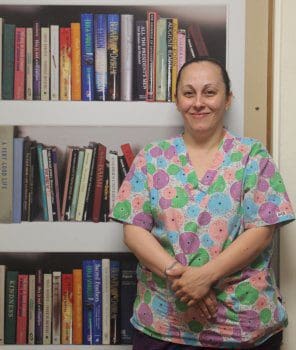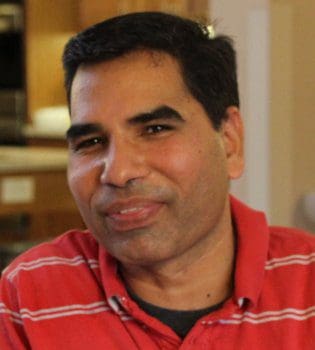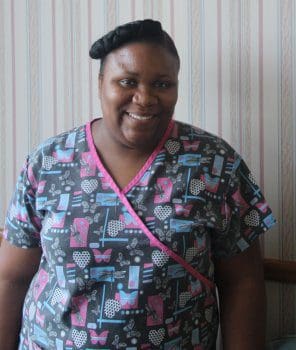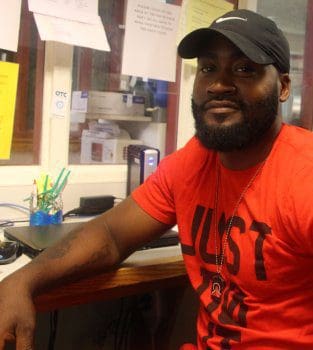Shahbazim Roundtable
The “shahbaz”—a versatile care worker whose focus goes well beyond simply providing care for elders—is a critical component of the Green House project as well as our transition to small homes. In the latest edition of our roundtable series, we collected the unique perspectives of four shahbazim working at St. John’s Home and St. John’s Green House Homes in Penfield.
As you have all worked previously in traditional nursing home settings, please compare that experience with working in small neighborhoods at St. John’s.
Ashok Kumar (Green House 65): When they were opening the green houses I was a CNA (Certified Nursing Assistant) at St. John’s Home. They were explaining the concept to people but nobody really knew what it was. Most people didn’t want to go because they didn’t know what type of work it was going to be. But I took a chance and six years later I am still here.
Lakeisha Rivera (Magnolia Neighborhood): Now, there is definitely more responsibility for us but it is a more pleasurable environment for elders. It feels like families feel more welcomed, too. We see more of them coming up to share a meal with their loved ones.

Melissa Williams
Melissa Williams (Apple Blossom Neighborhood): I have been on this floor (Reservoir 5) about eight years. I feel like elders see us doing more now and I think they trust us more. Before small homes there was a lot of floating (aides working between different floors) going on. It got really hard for elders and for staff. There is more continuity of care.
Jermaine Ridgeway (Magnolia Neighborhood): Other places I have worked felt more like a prison. I felt like I had to walk into work and put a smile on my face and try to make the elders feel more at home. There wasn’t that home-like feel and there weren’t too many activities going on. What I like about being here is that we can actually make that happen.
What was the most challenging adjustment you needed to make to be successful in your shahbaz role?
Lakeisha Rivera: I would say time management. But our training really helped with that. It really motivated me to say “if we work together and everybody keeps a positive mindset, we can get this done.”
Jermaine Ridgeway: Yes, time management. Or maybe I would call it time adjustment. With more responsibilities, I find myself coming in a little earlier to try and set something up.

Ashok Kumar
Ashok Kumar: For me it was cooking. Being from India, I knew nothing about cooking. We had a two-week culinary training, and some people didn’t even know how to hold a knife. I learned a lot and even use some of that knowledge at home now. It was good experience.
Melissa Williams: We do have a lot more to do, but it does keep you busier throughout the day.
How do you explain your job to people who do not know what a shahbaz is?
Ashok Kumar: Well, when we started we had the same question. I tell people that as a shahbaz, care is just one part of the job. You do so much more.You cook, you clean, and you do laundry.
Melissa Williams: I let them know it’s a homier environment. It is not institutional. We are not their aide, we are more like their family.
Jermaine Ridgeway: I don’t actually think that it’s really all that different than taking care of somebody in their home. You are in someone’s home and you’re there to make sure their meals are cooked and they are taken care of. Mostly, we’re here to make sure they are feeling good about themselves.
Lakeisha Rivera: I explain that we are trying to make elders feel at home. A lot of the people I talk to do not do what I do at other places. They are surprised to hear about how much we do here.

Lakeisha Rivera
For you personally, what is your favorite part of your job as a shahbaz?
Lakeisha Rivera: The best part for me is making the residents happy. We offer ourselves to them and make them feel like they can depend on you. There are some elders who don’t know my name but they know my face. They remember that I have helped them before.
Ashok Kumar: When we all sit together at mealtime. We are able to hold a conversation. That is the best part of the day.
Melissa Williams: Talking to the elders. Listening to their stories, looking at pictures from when they were growing up, or hearing about their careers and their kids. Now we get to sit down at meals and have a real conversation.
Jermaine Ridgeway: Yeah, interacting with the elders. I love them. It is great to see them smile and laugh. That’s the fun part.
Please speak to the idea that a small team of shahbazim are better able to care for elders as opposed to the more segmented structure of an institutional nursing home?
Melissa Williams: I do see that it is a lot better for the elders. Sometimes being around more people can be distracting, and I think they like the smaller group setting. I also think the physical changes they’ve made to the floor have divided things up and given us a lot more room to spend time in those smaller groups.

Jermaine Ridgeway
Lakeisha Rivera: If you know a person’s routine, I would say just do it the way they like it. I think we can do that better now. It makes for a smoother day for you and for them.
Ashok Kumar: Yes, the elders do benefit. They tell us how happy they are here. I always say that I am very lucky to be a part of this team. This is a great place to work and live.
Jermaine Ridgeway: We are still in the middle of the transition, but I see glimpses of it. I see where St. John’s is going with the small homes. I believe everything will fall into place just how it is supposed to.
